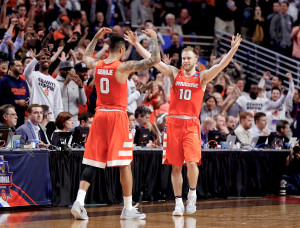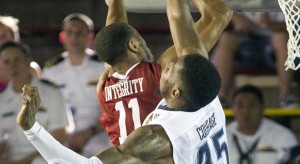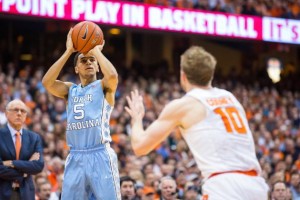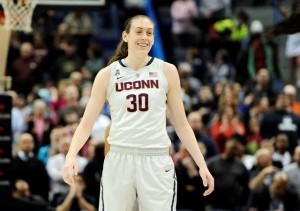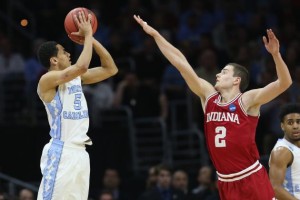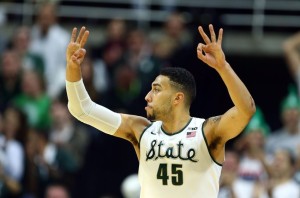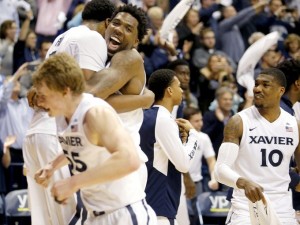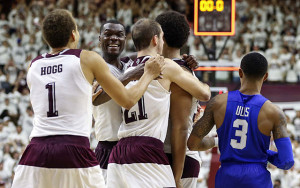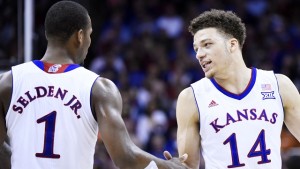
Scenario A: You are the coach at Arkansas Little-Rock University. You’ve just been offered the same position at UNLV, a school that would be willing to pay more than double your current salary. You decide to stay in Vegas for at least one full year, hoping to attain success and land your dream job with a bigger, more prestigious school.
Scenario B: Scenario B is the same as Scenario A, except that your dream job, the opportunity to coach at Texas Tech, opens up three weeks later and you jump at the chance.
Scenario B came to fruition last week for Chris Beard. After just one season in Little Rock, he accepted the newly-vacated job at Texas Tech after Tubby Smith left Lubbock for Memphis’ vacancy. On the surface, the move would seem unethical: why would a coach defy his commitment to a team and its players in order to flee both for greener pastures less than a month later? Should we redirect our outrage from Beard to the NCAA’s flawed system that allowed him to leave in the first place?
Both questions have answers, but one is much clearer than the other.
As for the first question: Beard left UNLV for Texas Tech because he clearly valued the latter job more than the former. That happens all the time in the real world, regardless of tenure. It’s called the free market, and it allows you to take the job you feel is the best for you, your family, and your reputation. Cool, right?
But the second question raises a much bigger, more complicated problem. How can the NCAA set up a system that allows players and coaches to capitalize on the free market? Is that possible? Would the NCAA even enact any legislation to benefit its players?
As you can tell, I have no issue with what Chris Beard did. If you were in his position, you would probably do the exact same thing. You’re getting the chance to prove yourself as a big-time coach in college basketball after just one season in Division I. If you wouldn’t do the same thing, you either love UNLV or are frightened at the prospect of being a young head coach at a major-conference school. If that prospect scares you, there’s no way you would have been a Division I head coach in the first place.
But here’s the problem: many players would like the opportunity to do the same thing. Frankly, it’s hard to blame them.
Last month, Michigan players Spike Albrecht (a fifth-year graduate student) and Ricky Doyle (a sophomore) expressed their desire to transfer out of the school and play elsewhere. Albrecht will have graduated by the time next season comes; therefore, at least he can transfer and play right away for whichever school he wants, right? Not completely.
As the transfer rules of the Big Ten state, a player who transfers from one Big ten school to another will be subject to sitting out a full year. Also, a head coach is allowed to restrict a player from transferring to certain schools; Michigan coach John Beilein wanted to prevent Albrecht and Doyle from leaving for schools that the Wolverines would play in their conference schedule. Because Beilein did not want to face either of his former players twice next year, he blocked both Albrecht and Doyle from transferring to Big Ten schools.
However, after a public backlash in support of the two players and against Beilein, the transfer restrictions on both student-athletes were lifted. It was the definition of a backfire directly in the face of the Michigan coach. The sad part? This isn’t the first time that a coach has blocked a player from transferring to certain schools.
In 2012, Jarrod Uthoff was looking to leave Wisconsin after not seeing playing time in his freshman season. He asked for a release from the program in April of that year; then-head coach Bo Ryan’s response to this request was to block him from enrolling at 26 different schools, including every single Big Ten institution. Ryan would later allow Uthoff to enroll at out-of-conference schools but kept his restriction on Big Ten schools. Uthoff would stay in the conference by enrolling at Iowa and paying his own way at the university for the 2012-13 academic year.
If Ryan had not tried to brazenly protect his and his school’s own interests, Uthoff would have been subject to the NCAA’s undergraduate transfer rules. These restrictions force a player to sit out a full season before playing for his or her new school; the catch is that the player can receive an athletic scholarship after sitting out that season.
Uthoff received that scholarship after sitting out the 2012-13 season, and the decision to leave Madison worked out for him. He became one of the best players in college basketball and even garnered Player of the Year attention for most of last year before a late-season drop-off.
This is the main argument here: if coaches can move from destination to destination within the span of three weeks, why can’t some players jump ship after attending a university, in some cases, for four years? Also, why should players have to stay at a university after the coach they signed on to play for leaves for a better job? And why should players be subject to sitting out a full season when they are not being compensated for their services, services that have earned the NCAA nearly $1 billion in revenue in years past?
There aren’t valid answers to these questions that still allow the NCAA to keep its amateurism model. The only way coaches should be allowed to bar transfers from attending certain schools is if the players are compensated. That way, they can co-sign to a legitimate agreement that allows their superiors to refuse their transfer aspirations. Without such agreement and compensation, what legitimate right do coaches and athletic directors have to dictate where their players go after they’re done with their former university?
And why can’t college athletes capitalize on the same free market that Chris Beard and other coaches have used to their advantage?
Because the NCAA won’t let them.


